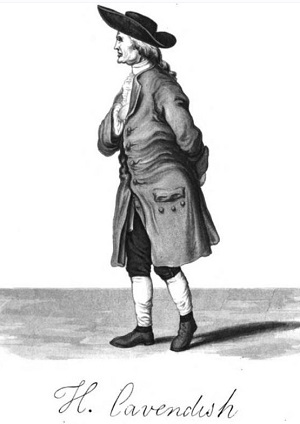|
Last time we learned that Henry Cavendish determined a value for G, the universal gravitational constant, fast on his way to determining a quantity he was determined to find, the Earth’s mass. Today we’ll see how the previous work of Christiaan Huygens, a contemporary of Isaac Newton’s, helped him get there. First Cavendish used algebra to rearrange terms in Newton’s gravitational formula so as to solve for M, Earth’s mass. Rearranged, Newton’s formula becomes, M = (g × R2) ÷ G But in order to solve for M, Cavendish first needed to know Earth’s acceleration of gravity, g. To aid him in this calculation he referred back to the work of Christiaan Huygens, a Dutch mathematician from Newton’s time. Huygens was eager to devise a formula capable of predicting clock pendulums’ motions on ships, his goal being to invent a timepiece accurate enough to make navigating ships easier. He hypothesized that a key factor in predicting a pendulum’s movement was an unknown constant, the acceleration of gravity factor, g, which Newton had previously posited existed. Through meticulous observation, Huygens came to realize that the time it took for pendulums to complete one swing back and forth was dependent not only on the length of the pendulum, but also this unknown quantity. In order for Huygens’ computations to work, the value of g had to be a constant, meaning, its value could not vary between computations; g‘s value was in fact a fudge factor, a phantom he would assign a specific numerical value. Huygens’ needed it in order to make his hypothesis work, a practice commonly use by scientists, even today. Determining a value for g would allow Huygens to successfully relate the length of the pendulum to the timing of its swing and to create a mathematical relationship between them. Huygens ultimately determined g’s value to be a whopping 32.2 feet per second per second, or 32.2 ft/sec2. We’ll see how he did it next time.
_______________________________________
|
Posts Tagged ‘falling objects expert’
Huygens’ Use of Pendulums
Tuesday, October 21st, 2014Newton’s Law of Gravitation and the Universal Gravitational Constant
Monday, September 29th, 2014|
Last time we introduced the term acceleration of gravity, a physical phenomenon posited by Sir Isaac Newton in his book Philosophia Naturalis Principia Mathematica. Newton’s Law of Gravitation is also presented in this book. It provides the basis for his mathematical formula to calculate the acceleration of gravity, g, for any heavenly body in the universe. Newton’s formula to compute the acceleration of gravity is, g = (G × M) ÷ R2 where, g is the acceleration of gravity, M the mass of the heavenly body, R the radius, and G the universal gravitational constant. As for the values of the variables in his equation, Newton theorized that G would be a constant, holding the same numerical value throughout the universe. This universal gravitational constant would be the glue that bound together M, the mass of the object being measured, and R, its radius, and render Newton’s formula a workable equation. Without these three values, scientists would be unable to determine the acceleration of gravity rate, g, for the heavenly body under study, and Newton’s equation would be useless, relegated to the depths of pure mathematical theory. In fact, the value for G wasn’t determined until 1796. At that time Henry Cavendish derived its value as an adjunct to calculating the mass of Earth. In the end he was able to arrive at values for Earth’s mass, M, as well as its radius, R. He also came up with the much needed value for G, the universal gravitational constant. He was able to accomplish so much by building upon the work of other scientists before him. We’ll see who those earlier scientists were and how they contributed to the world’s discoveries concerning gravity next time.
_______________________________________
|
Proving Galileo’s Theory On Falling Objects
Thursday, September 11th, 2014|
Last time we discussed how Galileo proved Aristotle’s theory regarding the physics of falling objects to be wrong, although his experiment, which took place on the infamous Leaning Tower of Pisa, did not actually prove his own theory to be correct. So why didn’t Galileo go the extra mile and prove his theory? Because he couldn’t. Galileo, of course, resided on Earth, which was also the arena in which his experiment took place. As such, both he and his experiment were subject to the physical constraints presented by the Earth lab, the single most influential factor being the impact of the planet’s atmosphere upon his falling objects. Put another way, contrary to popular belief at the time, air is not an empty, innocuous space devoid of physical properties. It’s actually a gaseous soup of molecules. Nitrogen, oxygen, carbon, hydrogen, and other elements are in the mix, and they all have mass, that is, weight within a gravitational field. As Galileo’s balls fell, they continuously bumped against these molecules, which slowed their descent. This air friction will be discussed later in our blog series. But in order to prove Galileo’s theory correct beyond a shadow of a doubt, the testing arena would need to be one free from the interference of atmosphere. The Moon fits this criterion and provided the perfect environment to prove, once and for all, that Galileo’s theory was correct. So when astronauts Scott and Irwin simultaneously dropped a hammer and feather to the Moon’s surface, both objects hit at precisely the same moment. Watch this captured live footage of the event to see for yourself: One thing you may have noticed while watching the astronauts’ experiment is that the hammer fell more slowly than it would have on Earth. This has nothing to do with the absence of atmosphere on the Moon, but it has everything to do with gravity. We’ll discuss gravity’s influence in detail next time. _______________________________________
|





